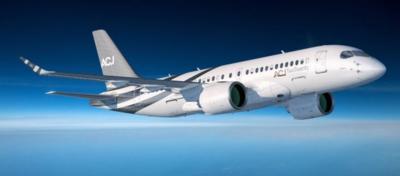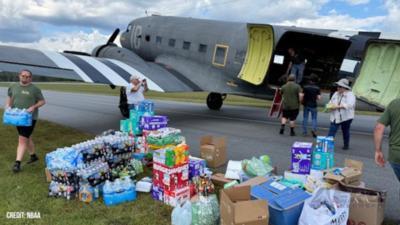Wed, Oct 23, 2024
ACJ Expects the Sector to Contribute $33 Billion More Within Five Years
A recent study led by Airbus Corporate Jets (ACJ) revealed that the US business aviation (BA) industry is expected to generate $182.8 billion by 2029. This is almost $33 billion more than the current economic contribution of $150 billion.

The US is home to over 5,000 public airfields, though less than 500 support commercial airline operations. This makes business aviation a necessary service for connecting passengers nationwide, and its role is only expected to continue growing.
The ACJ study interviewed industry financers and brokers. 85% believed that business aviation will become more crucial within the next five years, and 83% stated that the sector will be vital for emergency response and humanitarian relief missions. This is not hard to believe after seeing how quickly business aviators jumped into action following Hurricanes Helene and Milton.
Other ACJ research, involving senior executives of mega BA corporations, noted that 64% of those interviewed would be willing to use their aircraft for philanthropic services. Out of the 36% who responded negatively, 25% stated that they did not have enough aircraft and 22% blamed a lack of internal management for this type of operation. The other half intends to reconsider this application in the coming three years.

“The wider positive benefits from the business aviation sector are often overlooked,” expressed ACJ President Chadi Saade. “The sector not only supports organizations in their growth plans by enabling them to more easily reach destinations and facilitate important meetings, it also supports many local communities that are not serviced by commercial airlines, creating thousands of jobs from engineers to catering staff to pilots.”
200 Airbus corporate jets are currently in service. The latest ACJ project is its TwoTwenty: ‘The Xtra Large Bizjet.’ It features a cabin twice the size of other ultra-long-range (ULR) aircraft in the same price range. ACJ claims that the jet will produce the same parking footprint and can take off from the same airports while reducing operating costs by 33%. It is capable of flying on a 50% kerosene and sustainable aviation fuel (SAF) blend, though Airbus hopes to switch to 100% SAF fuel for its entire fleet by 2030.
More News
Terminal Radar Service Area Airspace surrounding designated airports wherein ATC provides radar vectoring, sequencing, and separation on a full-time basis for all IFR and participa>[...]
Very High Frequency (VHF) The frequency band between 30 and 300 MHz. Portions of this band, 108 to 118 MHz, are used for certain NAVAIDs; 118 to 136 MHz are used for civil air/grou>[...]
“From approximately November 2021 through January 2022, Britton-Harr, acting on behalf of AeroVanti, entered into lease-purchase agreements for five Piaggio-manufactured airc>[...]
Also: Virtual FLRAA Prototype, IFR-Capable Autonomous A/C, NS-32 Crew, Golden Dome Missile Defense Bombardier announced that the first production Global 8000 successfully completed>[...]
Aero Linx: The 1-26 Association (Schweizer) The Association’s goal is to foster the helpfulness, the camaraderie, and the opportunity for head-to-head competition that is fou>[...]
 ANN's Daily Aero-Term (05.29.25): Terminal Radar Service Area
ANN's Daily Aero-Term (05.29.25): Terminal Radar Service Area ANN's Daily Aero-Term (05.30.25): Very High Frequency (VHF)
ANN's Daily Aero-Term (05.30.25): Very High Frequency (VHF) Aero-News: Quote of the Day (05.30.25)
Aero-News: Quote of the Day (05.30.25) Airborne 05.23.25: Global 8000, Qatar B747 Accepted, Aviation Merit Badge
Airborne 05.23.25: Global 8000, Qatar B747 Accepted, Aviation Merit Badge ANN's Daily Aero-Linx (05.30.25)
ANN's Daily Aero-Linx (05.30.25)




